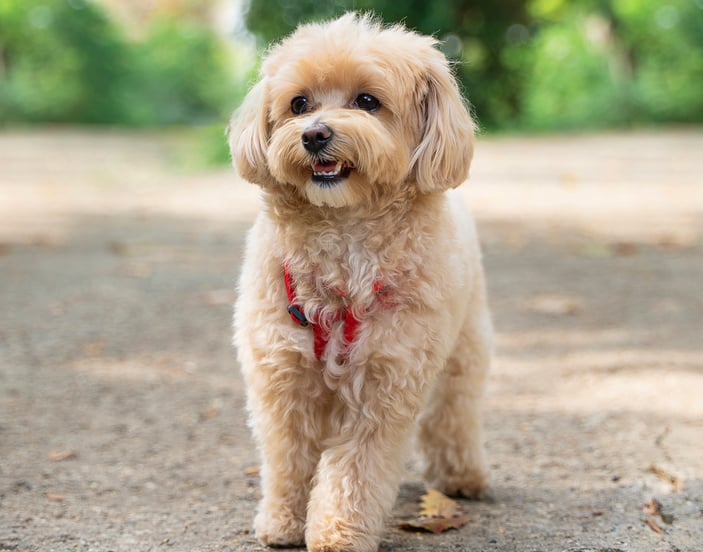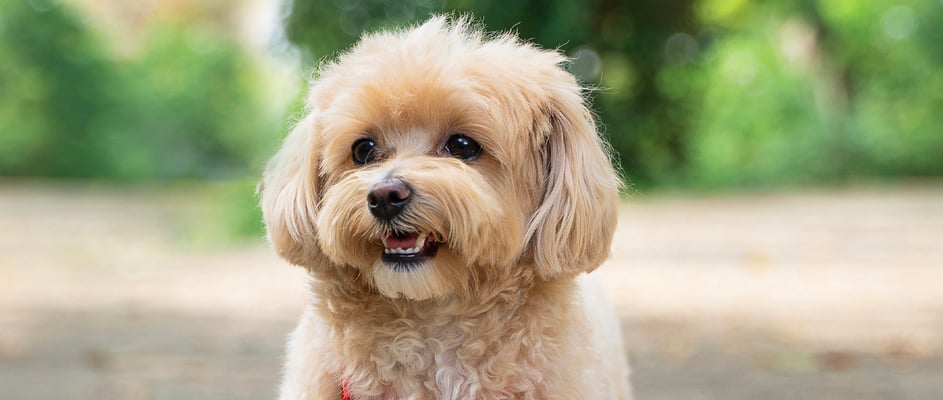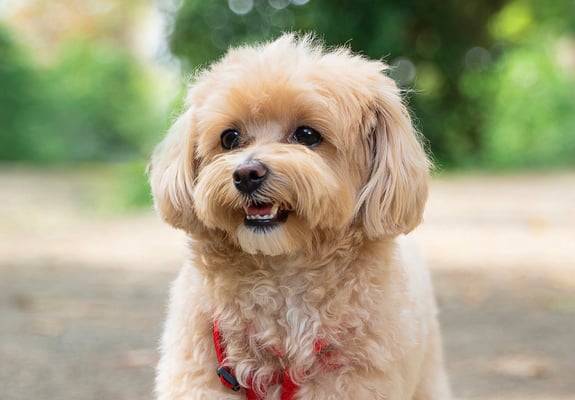The guide to owning a Maltipoo.
Want to know everything there is to know about finding the right dog for you? Submit your email below, and we’ll send you a one-stop guide to help you on your pet ownership journey.
Jump to:
Stats at a glance.
A history of Maltipoos.
Let’s meet the Maltipoo. A fluffy, adorable designer dog created by crossing a Maltese and Poodle.
These charming pups first gained popularity in the United States, where breeders wanted a small dog with a more hypoallergenic coat and a joyful spirit.
The Poodle parent side brings intelligence and a sprinkling of curly hair, while the Maltese side adds sweet nature and a strong devotion to its human family.
Their cuddly looks and affectionate personalities have turned Maltipoos into a popular designer dog around the world.
They usually have gentle temperaments that make them superb companion dog choices if you’re seeking a friendly pup that loves to curl up on your lap.
Want to explore more small breeds? Check out our guide to the top 10 small breeds.
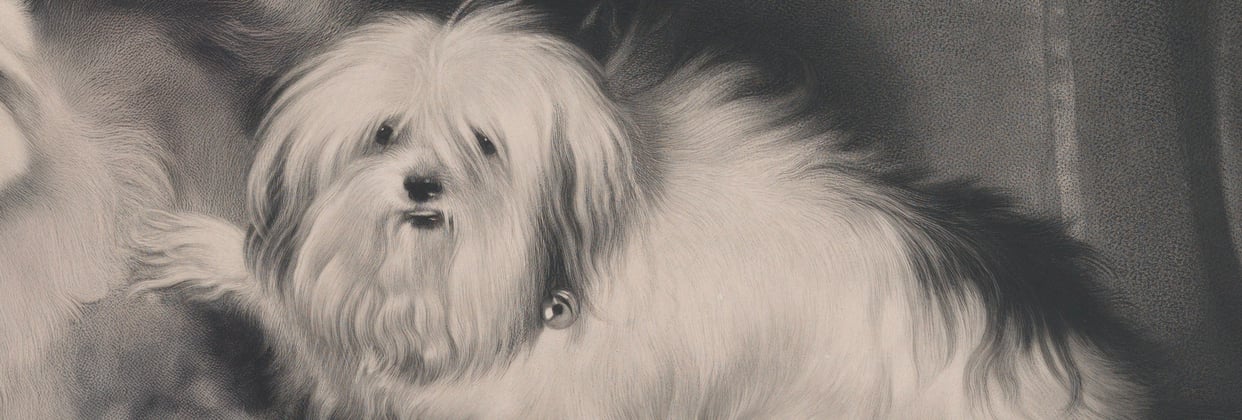

How much is a Maltipoo puppy (UK)?
If you’re thinking about adding a Maltipoo dog breed to your home, you’ll want to know the typical price range in the UK. These special pups can cost anywhere from £600 to £5,000. The exact cost depends on things like breeder reputation, the Maltipoo’s coat colour, and whether the parents come from purebred dogs.
Here’s what to look for in a reputable breeder:
They want you to meet the parent dogs, show all essential health checks, and ask you just as many questions as you ask them. A caring, responsible breeder will ensure each puppy has the best start.
Colours and coat types.
Maltipoo dogs often come in a variety of colours, from shades of cream, white, apricot, or black, to fun mixes of two or more hues.
The Maltipoo coat is typically soft, wavy, or curly and can be described as either a fleece-like or wool-like texture.
It is considered more hypoallergenic than other breeds and, along with their "teddy bear" cuteness, is one of the main reasons why Maltipoo puppies are so popular.
For a smooth bathing routine, see our guide on how to bathe a dog.
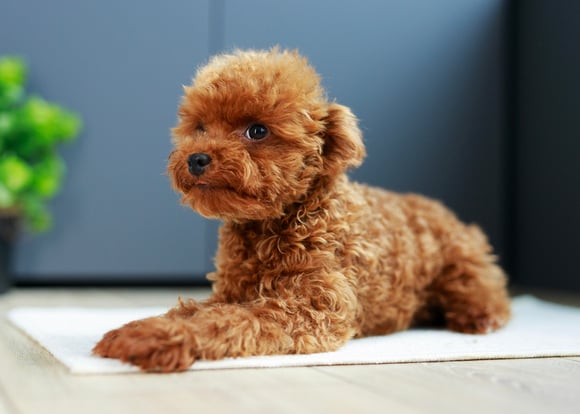
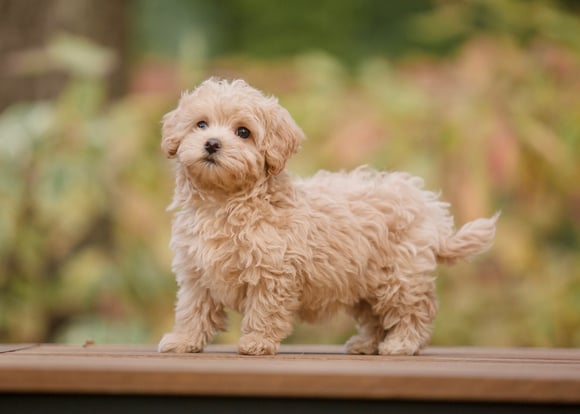
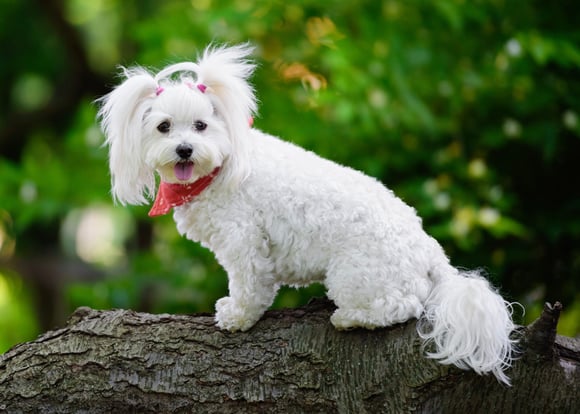
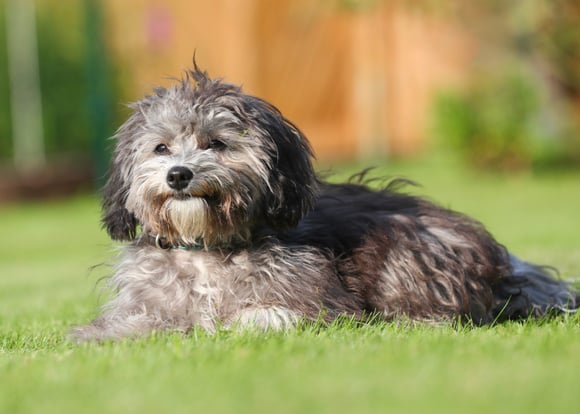
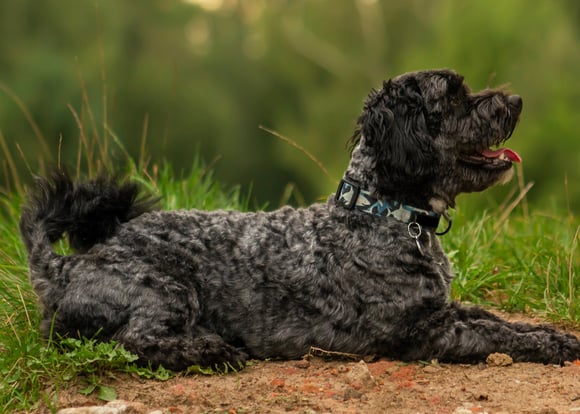
Size and weight.
Like Dachshunds, Maltipoos come in more than one size. They’re usually bred from a toy or miniature Poodle, so you can expect a small-sized pup that’s often ideal for apartment living.
Fully grown, they typically stand between 20–35cm at the shoulder and weigh 2–8 kg.
Have a soft spot for other toy breeds? Take a peek at our toy breeds guide.
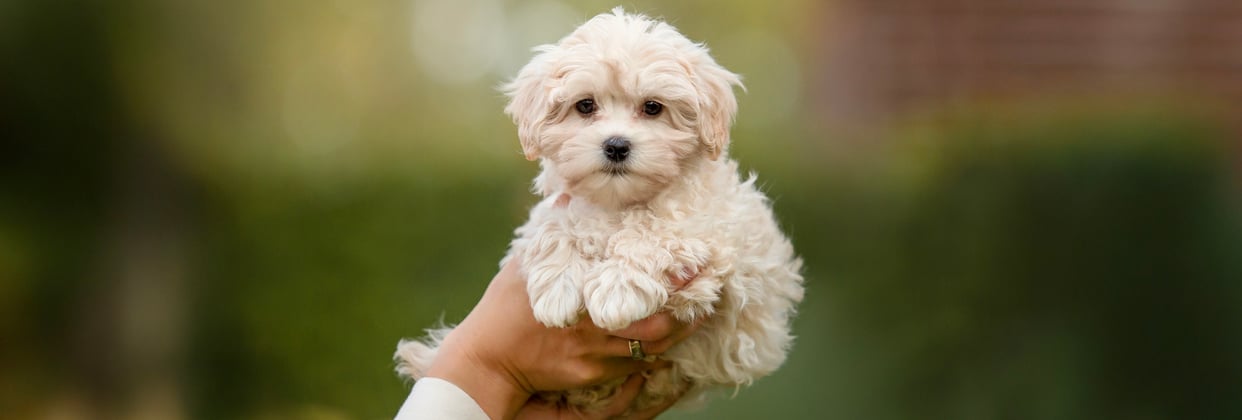

Temperament and behaviour.
Temperament
Despite their petite size, Maltipoo temperament is bright, lively, and deeply affectionate. These intelligent dogs want lots of interaction. They can do well with gentle children, seniors, and other household pets.
Do Maltipoos make good pets?
Yes. Their warm, friendly nature and strong desire to be with people make them fantastic companion dog choices. They adapt well to different living situations as long as they get the attention and exercise they need.
Are Maltipoos good with kids?
Yes, most Maltipoo make great friends and will enjoy playing with children. Just watch any rough handling, since most small dog breeds are quite delicate. Teach kids how to be soft, just like you’d do with any pup.
Are Maltipoos good with cats?
If introduced early, many Maltipoo pups accept other pets, including cats. Their sweet nature helps, though a confident cat and calm approach are key.
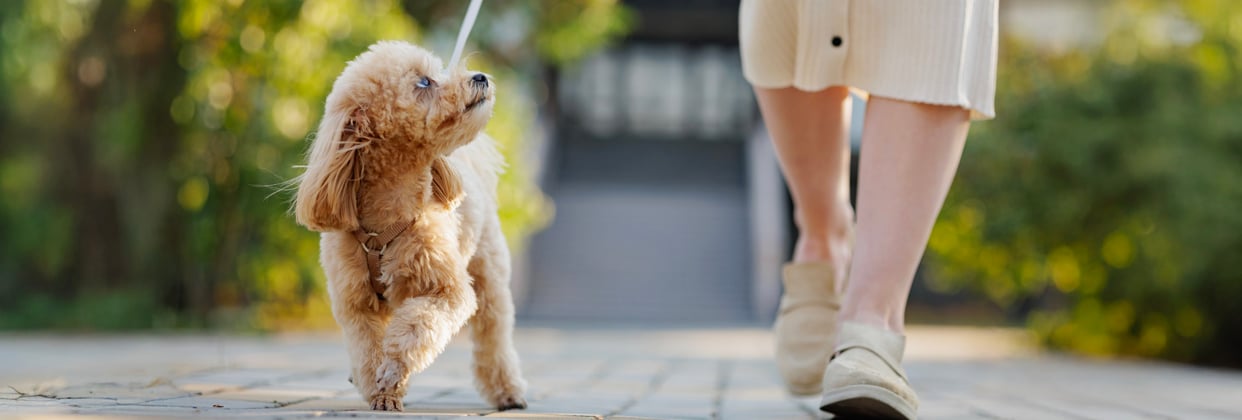

Do Maltipoos suffer from separation anxiety?
Many Maltipoos love human company so much that they may struggle when left alone. You can learn more in our post on separation anxiety. Gradual training and positive reinforcement techniques can help your pup feel calmer when you’re away.
Can Maltipoos be left alone?
Most dogs can handle short periods solo. Try not to exceed 4–6 hours, and consider a dog walker or day care if you have a busy schedule. This eases the separation anxiety that Maltipoo pups can sometimes experience.
Can Maltipoos live in apartments and do they bark a lot?
Yes, Maltipoo pups adapt well to smaller spaces, as long as they have short outings and mental stimulation. Their small size suits city living, and they typically don’t require vast garden space.
They can be vocal watchdogs, especially if they sense something new. Daily exercise, training sessions, and mental games can reduce excessive barking. If you want behaviour tips, take a look at other similar advice we offer, like the post about a dog barking at night.
Training a Maltipoo.
Are Maltipoos smart?
Indeed, these pups often inherit the Poodle’s quick mind. When training, a Maltipoo needs consistent guidance in short, upbeat lessons. They respond to positive reinforcement, fun games, and plenty of praise.
Keep training sessions brief and enjoyable. Harsh methods won’t work well with such a sensitive breed. The goal is building trust, not fear.
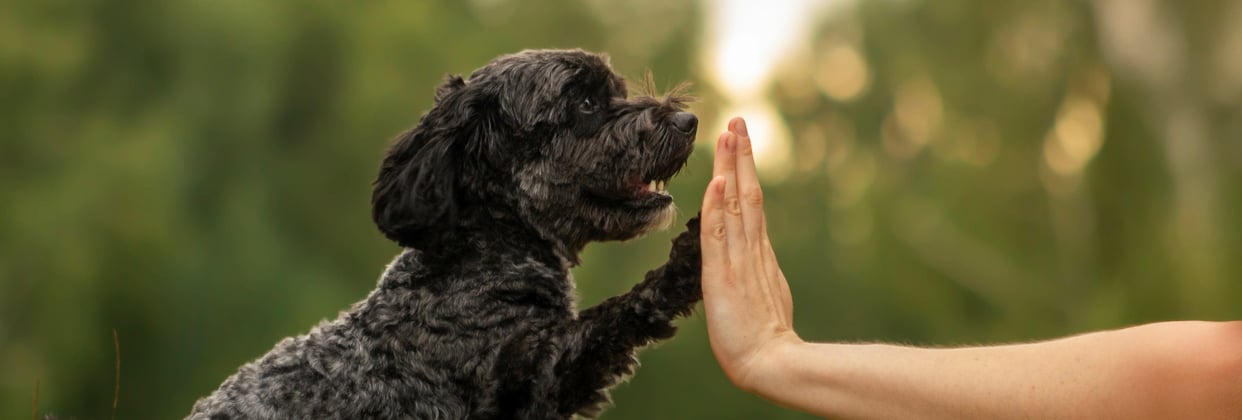

Shedding and grooming.
Maltipoos are known for low shedding or minimal hair loss. Although some refer to them as hypoallergenic, no dog is truly allergy-proof. Still, their coats are simpler on the sinuses compared to heavier shedders.
How often should I brush my Maltipoo?
Aim for daily brushing to remove loose hair and prevent mat tangles. A monthly trim or professional grooming every 6–8 weeks keeps the coat tidy.
Curious about products that may help if your dog has dry or itchy skin? Glance at our piece on dog shampoos for itchy skin.
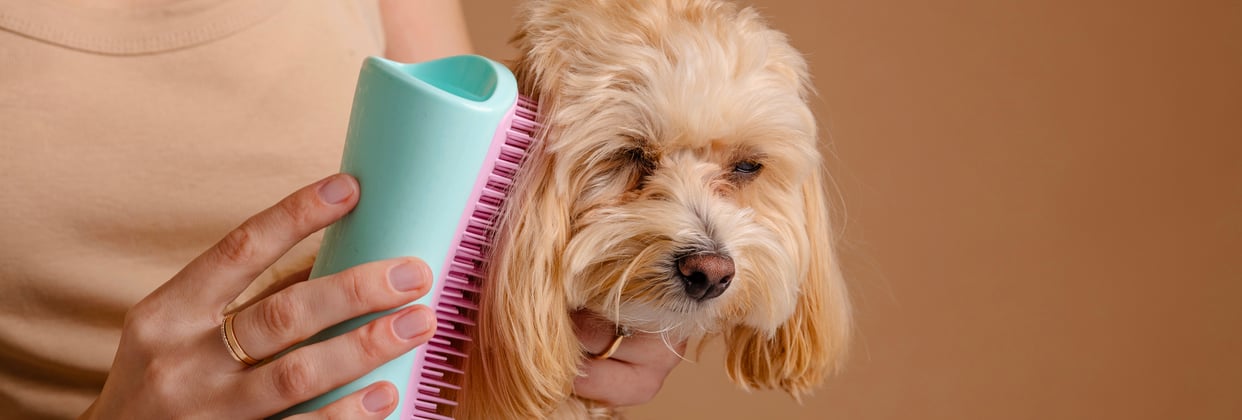

Exercise and mental stimulation.
A Maltipoo may be small, but they’re zesty. Twenty to thirty minutes per day for walks and interactive play typically does the trick. Avoid strenuous jumps or high-impact landings, since Maltipoos can be prone to health issues in their joints.
They thrive on puzzle toys, sniffing games, and learning new tricks. These brainy pups like variety, so keep sessions fresh.
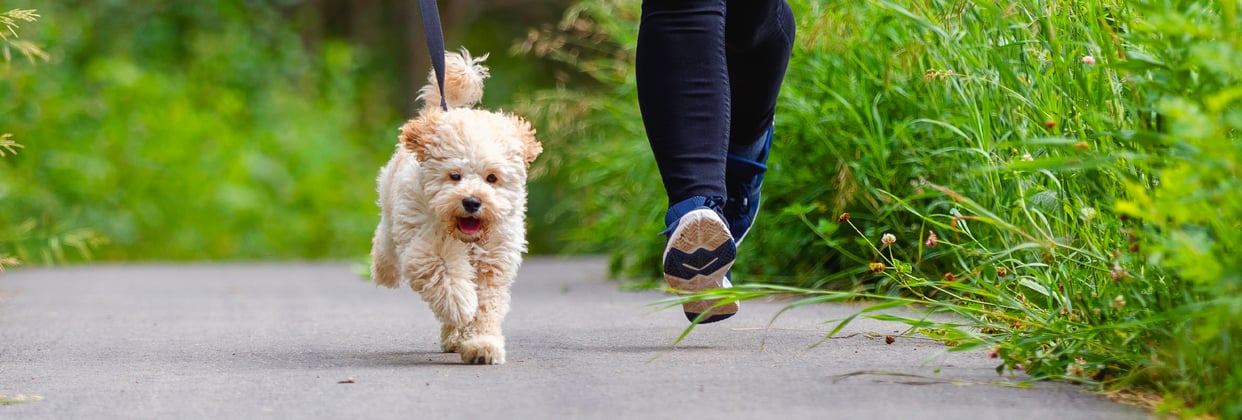

Feeding and nutrition.
Every dog is unique, but a diet of balanced dog food ensures solid health. Most adult Maltipoos do well with two small meals a day. Watch portion sizes to avoid obesity, as extra weight can strain their bodies.
As a Waggel member, you’ll get 50% off your first two boxes from Butternut Box – fresh, perfectly portioned meals made with ingredients good enough for humans!
Common health issues in Maltipoos.
While Maltipoo health is generally good, there are some health risks worth noting. Here’s a table of potential health issues, approximate costs, and how they’re treated:
Note: Costs are approximate and can vary based on location and specific veterinary practices.
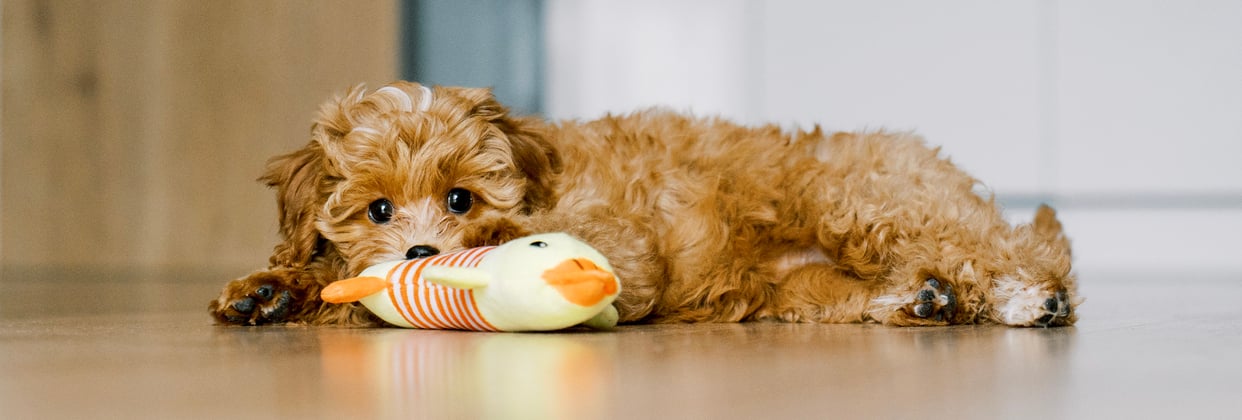

Pet insurance for Maltipoos.
Because these pups can be prone to health issues like progressive retinal atrophy, knee problems, or ear infections, having coverage brings peace of mind. At Waggel, we’re ready to help keep your Maltipoo healthy:
• Lifetime coverage for chronic conditions
• Fast, hassle-free claims
• 24/7 online vet support
• Exclusive membership perks
Click here for Maltipoo Pet Insurance. We’ll handle the details so you can enjoy life with your new pup.
Owning a Maltipoo is rewarding. These little charmers bring affection, loyalty, and lots of fun into the home. With regular grooming to prevent matting, daily walks, positive reinforcement training, and support from our Waggel community, you’ll share a wonderful journey together.
